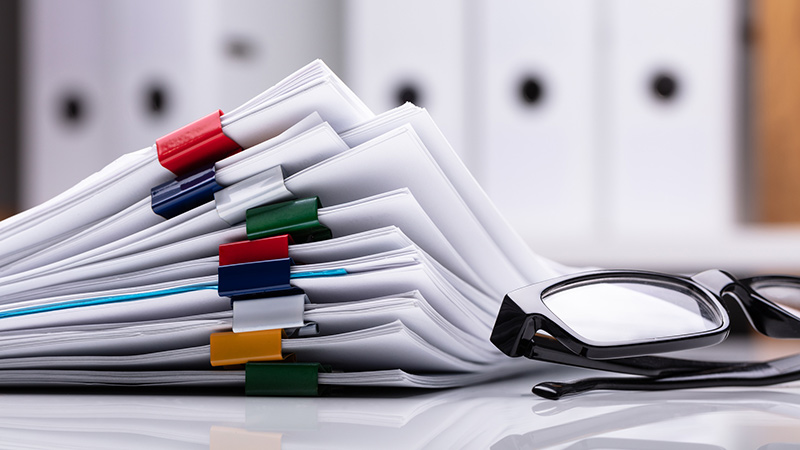
This content is for information and inspiration purposes only. It should not be taken as financial or investment advice. To receive personalised, regulated financial advice please consult us here at Elmfield Financial Planning in Padiham, Burnley, Lancashire.
Many people get caught off-guard by capital gains tax (CGT) – the tax on profits you make when selling (“disposing of”) assets such as shares and Buy-to-Let property. In particular, people can get hit with an unexpected CGT bill when moving house.
Here at Elmfield Financial Planning, we want to help ensure that people in Padiham, Burnley and further afield are not hit with needless tax bills like these. Find our thoughts below, which we hope you find useful.
If you’d like to speak to an independent financial adviser then you can reach us via:
T: 01282 772938
Moving & CGT
Theoretically, you are not supposed to pay CGT when you sell your main property and move into another one. This is because of Private Residence Relief which exempts your property’s sale from CGT, provided conditions such as the following apply:
- You only own one property (e.g. no Buy-to-Lets) and have resided there for the entire time you have owned it.
- The grounds do not exceed 5,000 square metres.
- You have not let any part of it out (does not apply to lodgers).
There can be a problem, however, if you move out of your property before selling it. Under the current CGT rules, you must nominate your “main residence” within two years of acquiring a new property. You must also specify which one you spend the most time in.
Failing to do this, however, means that the taxman will decide which property is your main residence. This can result in your initial home (the one you moved out of) becoming deemed an “additional home” – which does not qualify for Private Residence Relief when you sell it, and would, therefore, be subject to CGT.
Therefore, if you move homes before your first home is sold, make sure you do not leave it longer than 18 months to nominate your main residence properly.
Not maximising your CGT allowance
Each tax year, you are entitled to sell up to £12,300 in profits – e.g. from property and other assets, like shares in a general investment account (GIA) – without a CGT liability. This is known as your capital gains tax allowance, and it refreshes in the new tax year.
However, some people fail to plan their asset sales far enough in advance. This can result in a much higher CGT liability than is really necessary.
For instance, suppose you own a Buy-to-Let and a large equity portfolio in a GIA. Both have increased significantly in value over the years. Selling the former would generate £80,000 in capital gains – resulting in £67,700 being subject to CGT (after subtracting the CGT allowance). If you then also sold shares in your GIA for a profit within the same tax year, then these would also be subject to CGT.
If you can afford to wait, therefore, it might make sense to spread out your “asset disposals” across multiple tax years. Another option, if you are married or in a civil partnership, is to think about transferring ownership of certain assets to your spouse. This lets them use their own £12,300 CGT allowance when disposing of them.
Failing to maximise ISAs
If you are wanting to invest outside of your pension, then make sure you do not end up paying more CGT than necessary – due to neglecting your ISA. In 2021-22, up to £20,000 can be put into an ISA each tax year by an individual. Any capital gains, dividends or interest generated within this “wrapper” will be tax-free.
If you are building up investments within a GIA, therefore, consider speaking with a financial adviser about how to balance your ISA benefits with your annual CGT allowance. Remember, only certain assets – mainly cash, shares and bonds – can be held within ISAs. Other assets which may generate a capital gain when sold, such as property and cryptocurrency, cannot (at the time of writing).
As such, it might make sense to concentrate any non-pension equity investments within your ISA. If, at some point, you decide to invest in assets which cannot be held in an ISA, this may allow you to reduce future CGT – when you may wish to sell multiple assets in one year.
Think carefully about whether cash is best held within your ISA. Bear in mind that, today, ISAs usually do not beat the interest rates offered by banks’ regular savings accounts. Moreover, most people do not pay tax on cash savings outside of an ISA. This is because the interest they generate in a single tax year does not typically exceed their personal savings allowance (£1,000 for Basic Rate taxpayers, and £500 for those on the Higher Rate). Since you have a limit on how much you can put into your ISA in a single tax year, consider whether investments may be more suited to this tax-efficient wrapper than cash. Here, a financial adviser can help you.
Invitation
If you are interested in starting a conversation about your own financial plan or investments, then we’d love to hear from you. Please contact us to arrange a free, no-commitment consultation with a member of our team here at Elmfield Financial Planning in Padiham, Burnley, Lancashire.
Reach us via:
T: 01282 772938

